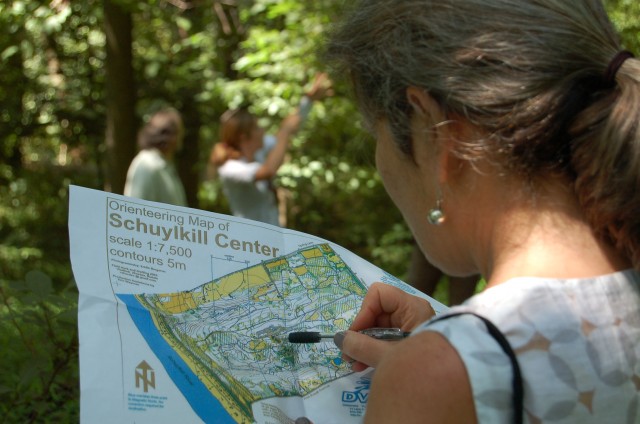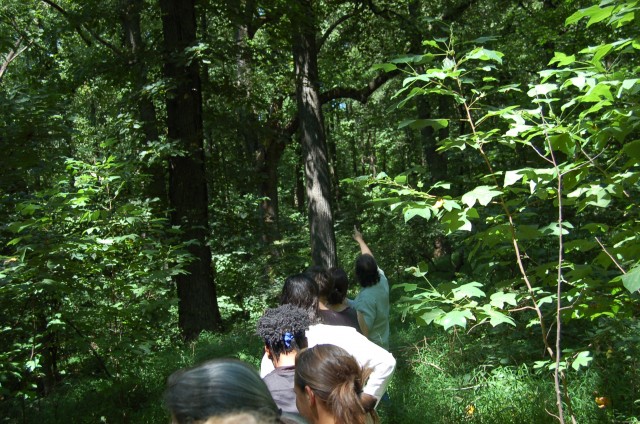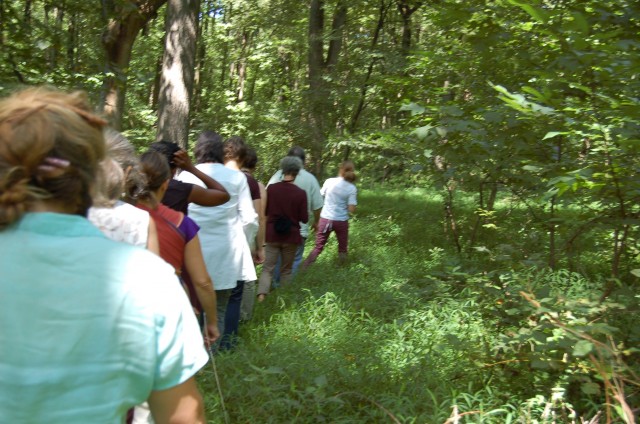By Jenny Laden
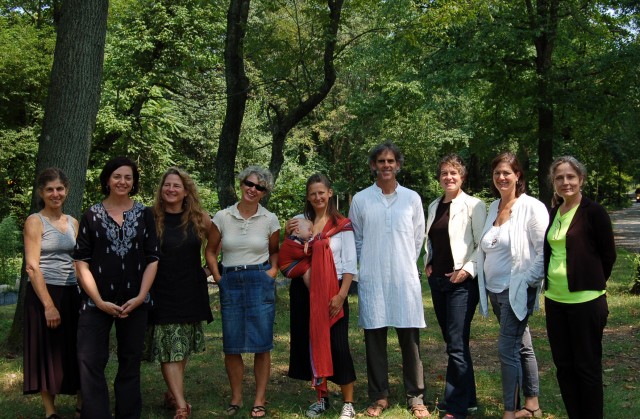
On August 16th and 17th, SCEE hosted seven Advisory Team Members to visit our center and assist in the re-visioning of the Art Program’s direction. As part of the Pew Philadelphia Exhibition Initiative’s Planning Grant, the Team was invited to convene over the two days to discuss the Center’s opportunities, challenges and help craft a clear vision for the direction of the Art department at SCEE. Learn about the team here. Visiting us over the meeting were Deenah Loeb, SCEE board member and Art Committee chair, and Mary Salvante, founder and former Director of the Art Program.
Over the two days, the team was introduced to the Center’s land with a long walk with staff members: Mike Weilbacher, Joanne Donohue, Gail Farmer and Jenny Laden.
We walked though Penn’s Native Acres and Joanne and Mike discussed the restoration efforts at SCEE, and the contrast between the “restored”/”managed” areas and the rest of our property – delving into the details of soil composition changing as a result of non-native earthworms, invasive plant species such as stilt grass and why it prevents forest growth.
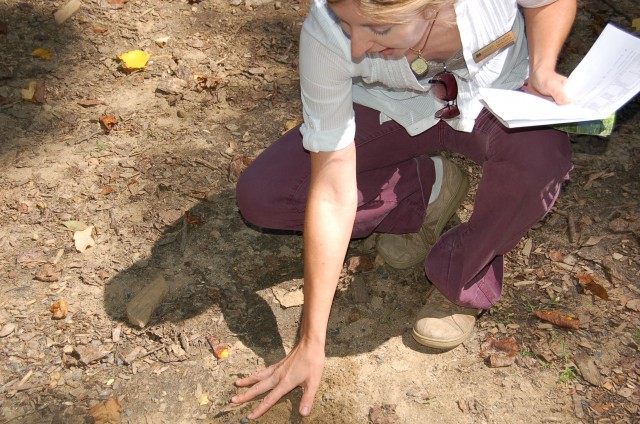
We saw erroded paths – the result of stormwater runoff from our building which runs down our hill. This errosion prevents growth, and brings unwanted debris to ponds and streams.
Gail Farmer, Education Director at SCEE, discussed the importance of environmental education, and the experience city dwellers have when they visit us here. She mentioned this book, which is an interesting perspective on why kids are reticent to fully engage in nature.
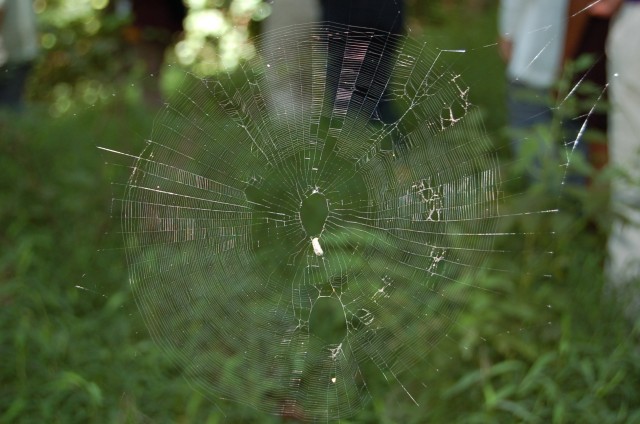
The team discussed other projects where art served to restore, remediate, revive bruised broken down space. We created a list of goals for our new work – including the notion that our projects must make visitors/participants and users Think, Feel and Do; provide well interpreted information, offer a moving/surprising/effective experience and clearly present ideas to bring home which might alter their behavior, or the world around them.
We discussed the value of collaboration, and the importance of experimentation, the problems with the term “sustainability,” using art to educate an urban community about nature, the relationship between art and science, on various levels (personal, institutional, national, global). The team felt strongly that our work here must consider multiple time frames (short, medium and large) – so that our art projects might have a variety of ways of becoming, being and remaining (or not). Nothing replaces the time spent in a place. Our most successful artist projects (like Jennie Thwing’s brolo hill project) thus far have come from artists who spent significant time here and arrive at a deeper understanding of the complexities that exist on our site.
At the end of a long two days, we collaborated on the following mission statement, paving a new way forward for the Environmental Art Program:
SchuylkillArt provides opportunities to investigate, innovate and interpret the nature of place
Stay tuned for team member interviews, blogposts and more.
